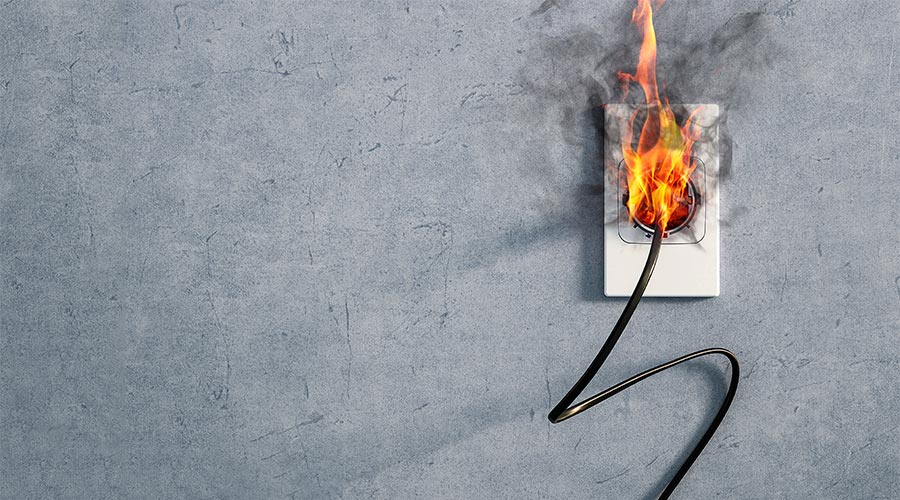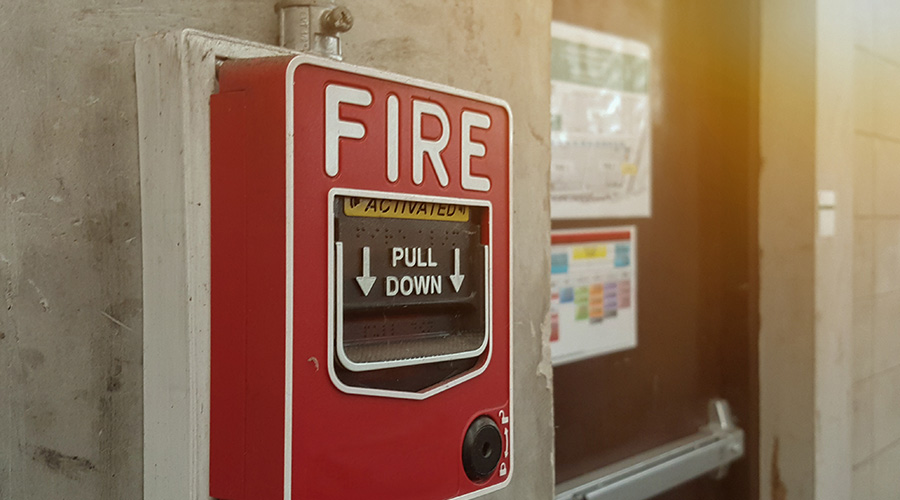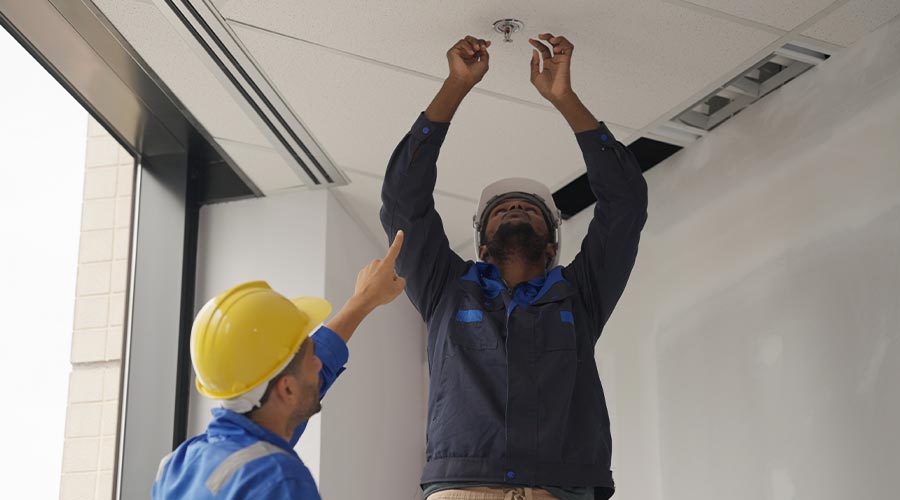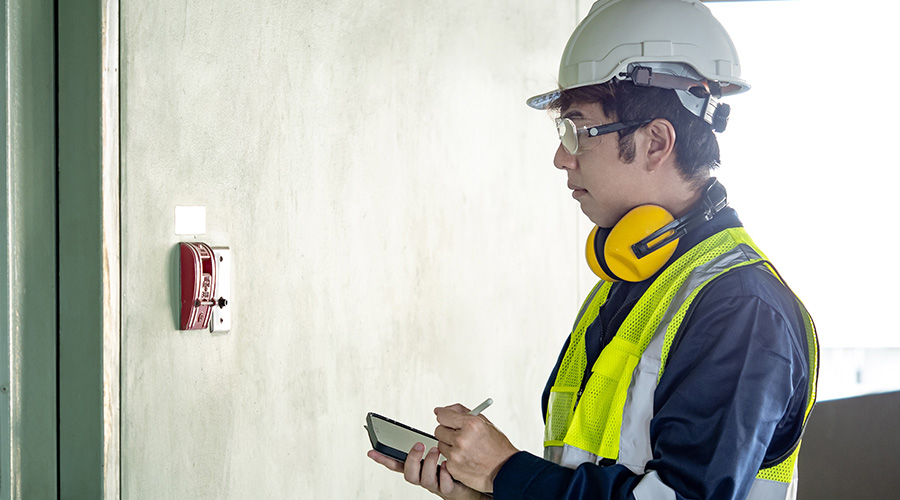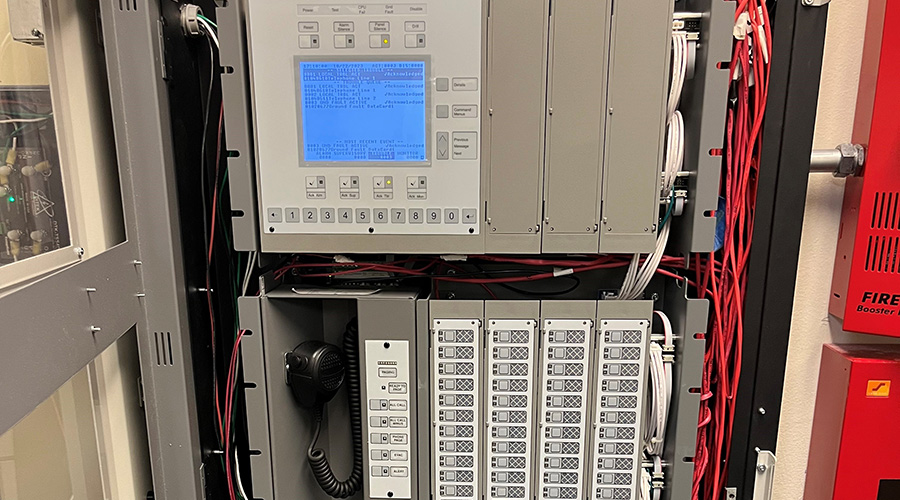4 Common Fire Hazards
By identifying common fire hazards, managers can greatly reduce the threat of blazes in facilities
Fire prevention often can be an overlooked aspect of maintenance and engineering management until something bad happens. Something as simple as a faulty smoke alarm or broken fire extinguisher can cause thousands of dollars in damage to institutional and commercial facilities.
In 2020, 16,500 office and store fires in the United States caused $932 million in direct property damage, according to the U.S. Fire Administration (USFA). Cooking (29.4 percent) was the leading cause of office and store fires in 2020, followed by fires started intentionally (11.2 percent), electrical malfunction (9.3 percent), other unintentional acts (7.8 percent), and appliances (7.6 percent).
“This underscores the critical need for fire prevention measures, including proper maintenance of heating systems, electrical safety practices, and vigilance against intentional fires, to safeguard these environments and mitigate potential damages,” says Maria Marks, fire industry relations manager at Siemens Smart Infrastructure USA.
This starts with implementing simple yet effective precautions, including identifying potential hazards in your facility, creating a fire evacuation plan, and maintaining good inspection records and proper fire prevention systems.
Identifying common fire hazards
Fire prevention starts with identifying fire hazards within your facility. Among some of the most common are electrical, heating, storage and smoking.
1. Electrical: Electrical fires, a top cause of fires in almost any type of facility, can be divided into three categories:
- Worn-out or "tired" electrical equipment
- Improper use of equipment
- Accidental or operator error
The good news is they are easy to prevent with proper design, installation and maintenance.
Marks recommends facility managers regularly inspect and ensure that equipment such as appliances and computers are free from damage. “Avoid overloading power strips and outlets to prevent electrical issues,” she says.
Additionally, Marks recommends regularly checking and replacing frayed, worn, or damaged cables to mitigate electrical hazards.
“These straightforward measures contribute significantly to fire prevention by addressing potential sources of ignition and reducing the likelihood of accidents or malfunctions that could lead to fires in both residential and commercial settings,” she says.
2. Heating: Heat-producing appliances and associated equipment also are a common source of fire. Like electrical fires, proper installation, use and maintenance of heating systems is the best prevention.
Marks adds that in cooking or heating areas it is also vital to keep combustible materials at a safe distance to minimize the risk of fire.
3. Handling and storage of hazardous materials: Improper handling or storage of trash and combustibles can quickly become fire hazards. Maintaining an active building site and keeping it clean is the easiest way to prevent these types of fires from starting. Materials should never block areas of potential hazard such as gas meters or electrical disconnects.
4. Smoking: While today smoking is banned in most facilities, it is still a serious fire issue. Facility managers must ensure hazardous areas maintain strict “no smoking” policies and provide properly designed smoking areas if necessary. Facilities should also offer a convenient and safe way to properly collect and dispose of residue from smoking.
Fire prevention tips from the U.S. Fire Administration
Modern building design and fire codes protect most institutional and commercial facilities from fires, but there are still steps maintenance and engineering managers can take to prevent workplace fires and keep occupants safe. The U.S. Fire Administration (USFA) recommends a few basic preventative actions, including:
- Check for damaged or overloaded electrical outlets, cords and cables.
- Keep anything that can burn away from electrical equipment.
- Never leave portable heating devices unattended.
- Keep workspace and equipment clean, dry and well ventilated.
- Plan and practice multiple escape routes in case one is blocked.
- Ensure windows can be opened and screens can be removed.
- Remove any obstacles from exits.
There are also several preventive actions facility managers can take to prepare for emergencies. USFA recommends managers:
- Ensure all fire protection features are properly designed, installed and maintained.
- Post clean fire escape plans on every level of a building.
- Teach employees about exit locations, escape routes and fire protection equipment.
- Check the condition of fire ladders and escapes.
- Conduct regular emergency drills.
Related Topics:








